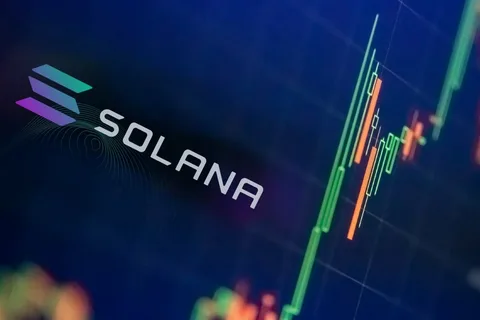If you’ve staked SOL or thought about it, you’ve probably asked yourself a basic question: what am I actually supporting here?
It’s easy to assume that staking rewards come from thin air or just some magic validator math. But really, your rewards are tied to the activity happening on the network. The more useful projects running on Solana, the more transactions. The more transactions, the more validators get paid. And that’s where your staking rewards come from.
So if you’re staking SOL, it helps to know what’s actually being built and used on the network—not just what’s been announced or teased in a whitepaper. Let’s talk about some of the projects that are live, have traction, and are doing real work to keep the Solana ecosystem moving.
A Few Projects Actually Doing Something
Jito is a good place to start. It’s focused on MEV (maximum extractable value), which sounds complicated but boils down to making validators more efficient and fair. That includes running a modified validator client and offering a liquid staking token too. It’s not flashy, but it’s critical infrastructure—and the kind of thing that quietly improves staking yields.
Marinade Finance is one of the bigger names in liquid staking. You deposit SOL, get back mSOL, and you can then use that across DeFi without unstaking anything. Simple concept, strong execution. It makes staking more flexible for people who want to keep their capital moving.
Solend covers lending and borrowing. You put up SOL, borrow USDC, or lend out stablecoins and earn interest. The platform’s been around for a while now, and it’s added risk controls that didn’t exist in the early days. It’s not experimental anymore. It just works.
Drift Protocol lets people trade perpetuals (basically leverage trading) on-chain. It’s more advanced than most DeFi platforms, with dynamic risk tools and proper price feeds. If you want to short SOL or go long without using a centralized exchange, Drift is your best bet on Solana.
Jupiter Exchange is one you’ve probably already used, whether you realized it or not. It’s the swap router that powers a lot of wallets and dApps. You hit “swap” in a wallet like Phantom, and chances are, Jupiter is the one finding you the best route behind the scenes.
Tensor has become the go-to NFT marketplace for serious traders. It’s faster, cleaner, and cheaper than most of the early platforms. If you’re flipping NFTs on Solana, you’re probably doing it on Tensor now.
All of these projects rely on validators to work. Every time a loan is issued on Solend or someone trades on Jupiter, a validator processes that transaction. That validator is funded by people staking SOL. So yeah, it’s all connected.
Why This Stuff Actually Affects Your Staking Rewards
It’s easy to think staking is just about picking the right validator with the lowest fee and calling it a day. But that validator is only getting paid if they’re processing actual activity. If Solana is quiet, you’re earning less. If the network is thriving, you get better rewards.
So the more you know about what’s live and being used, the better position you’re in to make real decisions about your stake. And no, this doesn’t mean chasing the validator with the trendiest name. It just means understanding that your stake doesn’t live in a bubble.
If you’ve never looked into the resources and staking info available here, it’s worth checking. You’ll find clear instructions on how to stake SOL, plus validator details and some helpful tools. No noise, no friction, just the stuff that actually matters if you’re staking.
Don’t Just Set and Forget
A lot of people stake once and never think about it again. That’s fine if you’re only putting in a small amount. But if you’re locking up real capital, it’s worth taking a second look every now and then. Validators change fees. Some improve performance, others fall behind. And the projects on Solana that matter today might not be the ones that matter six months from now.
That’s why it helps to check in once in a while. Update your numbers. Compare validators. And get a feel for what’s changing in the ecosystem. You can stay current by following Ivy Oracle Inc. They’re building in public, with a focus on transparency and actual utility for stakers.
Bottom Line
Staking SOL isn’t just about chasing the highest APY. It’s about putting your capital to work in a network that actually has something going on. When real projects use Solana, the whole system benefits—including you. If you’re going to stake, it’s worth knowing what’s underneath the surface. And it only takes a few minutes to get clarity.


